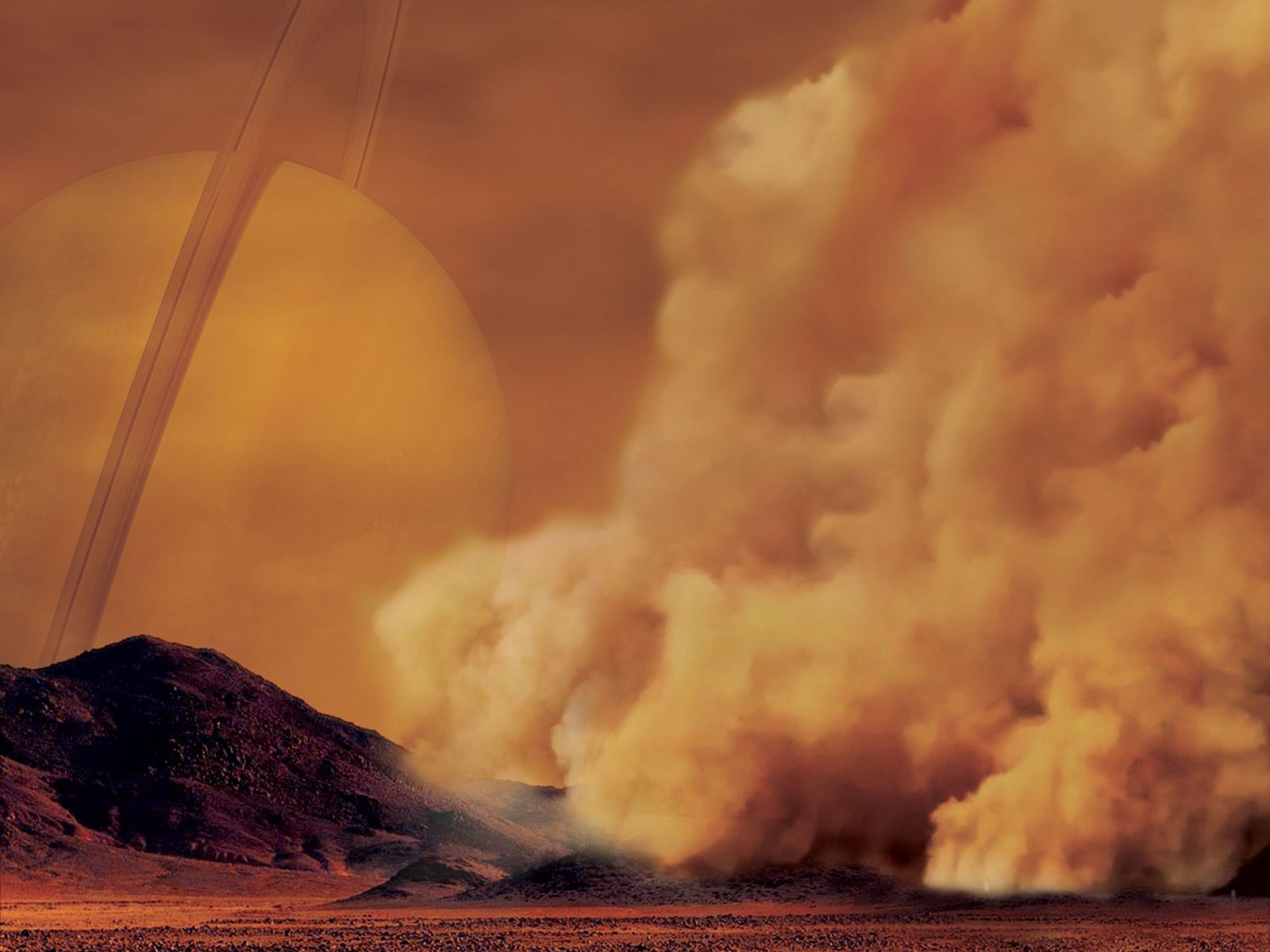Saturn’s moon Titan is alone among the Solar System’s moons. It’s the only one with any atmosphere to speak of. Other moons may have thin, largely insignificant atmospheres, like Ganymede with its potential oxygen atmosphere. But Titan’s atmosphere is dense, and rich in nitrogen.
A new study shows that Titan’s atmosphere and winds might produce dust devils similar to Earth’s.
Titan’s atmosphere is denser than Earth’s, according to data from Voyager. It’s thick and hazy and mostly nitrogen (97%.) It’s atmosphere is also a “super-rotator,” which means the atmosphere rotates much more quickly than the surface.
So what aeolian (wind-driven) processes arise on Titan?
The new study is titled simply “Dust Devils on Titan.” It’s published in the AGU’s Journal of Geophysical Research: Planets. The lead author is Brian Jackson, a planetary scientist at Idaho’s Boise State University.
First of all, what exactly is a dust devil?
A dust-devil is a short-lived whirlwinds laden with dust. They’re driven by convection, and on Earth can be up to 1000 meters (3280 ft) tall, though rarely. Dust devils are usually harmless, at least here on Earth. They’re kind of like a junior tornado. And while tornadoes are much larger and more deadly, and form from much larger circulations of air, dust devils can form in sunny weather without a larger parent structure in the atmosphere.
Conditions on Titan may create dust devils, though that’s not certain yet. But if they do, they may play an important role in both the transportation and creation of dust.
When Cassini was visiting Saturn and its moons, it found that up to 30% of Titan was covered in dunes, which ringed the equatorial region. These are not sand dunes, but rather hydrocarbon dunes. And the dust that the dust-devils is not regular, Earthly type dust. It’s likely hydrocarbon dust.
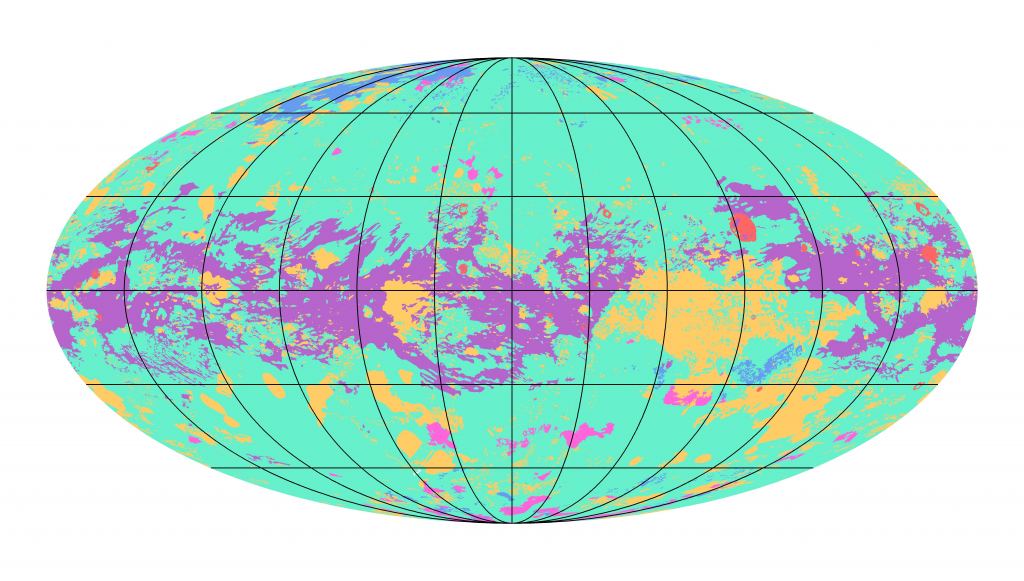
Scientists think there might be a parallel between dust on Titan and dust on Mars. Mars experiences regular global dust storms that shroud the whole planet. But it’s the Martian dust devils that actually transport the most dust around the planet. So even though Titan doesn’t experience the same global storms as Mars, its dust devils may play an important role in circulating hydrocarbons around the moon.
“We can watch dust devils skitter across the surface of Mars and see what their internal structure is like, but that doesn’t tell us how much dust they are lifting. Mars’ atmosphere is really, really dusty and dust plays an important role in the climate,” lead author Brian Jackson said in a press release. “Dust devils are probably, if not the dominant mechanism, one of the most important mechanisms for lofting the dust,” Jackson said.
So far, dust devils have not been observed on Titan. But Cassini did see a large dust storm when it was there. That dust storm was likely composed of organic particles carried aloft from the equatorial dune fields.
Titan’s dust seems to come from hydrocarbon aerosols that rain out of Titan’s atmosphere. Jackson says that even though we call it dust, it’s nothing like Earth dust, or even Mars dust. On those two planets, dust is rock grit, separated from parent geological structures by erosion. But on Titan, the dust is likely to have a plasticky texture.
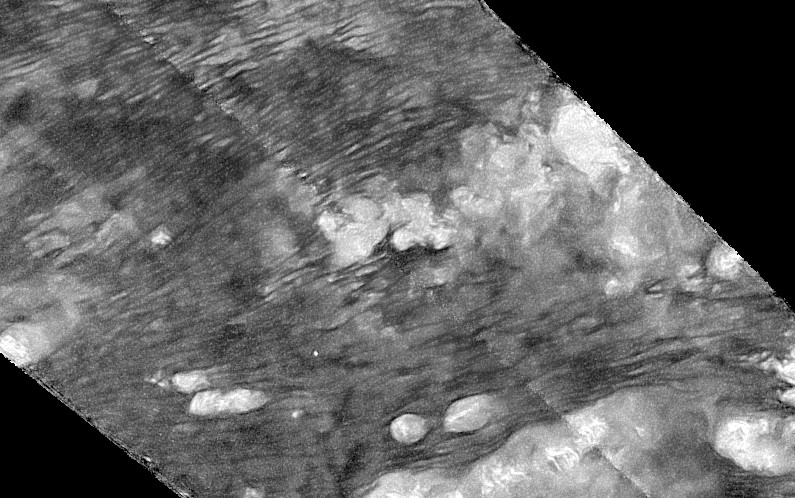
So no dust devils have been spotted on Titan. But we don’t have a long detailed history of observing that moon, so not seeing them doesn’t mean they’re not there. The authors of the new study showed that dust devils are possible on Titan. They did this by taking data from Cassini’s visit, and applying meteorological models to it.
Dust devils don’t need wind to form. On Earth they originate in dry, warm conditions, when the Sun heats the ground and the air near the surface. The warm air rises as a vortex, and dust gets swept up in it. But that’s only a partial explanation, and scientists don’t completely understand them.
“When we plug the numbers in for how much dust the dust devil ought to lift based on the wind speeds we see, they seem to be able to lift more dust than we would expect. There may be some other mechanism which is helping them pull this dust—or the equations are just wrong,” Jackson said.
If dust devils do exist on Titan, they may play an important role on the moon.
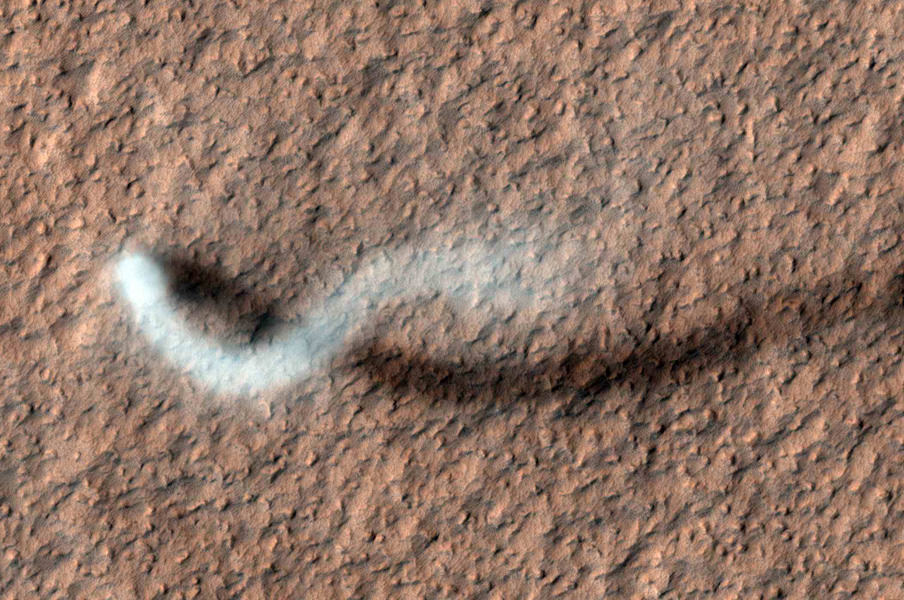
“Winds at the surface of Titan are usually very weak. Unless there is a big storm rolling through, there’s probably not that much wind, and so dust devils may be one of the main dust transport mechanisms on Titan—if they exist,” Jackson said.
Even though Titan’s atmosphere is about 1.5 times as dense as Earth’s, there’s typically not much wind there. That’s because it’s much smaller than Titan, and has only once-seenth the gravity that Earth has. Without that powerful gravity, it’s hard to get the wind moving.
“It’s just this enormous, puffy atmosphere. When you’ve got that much air it’s hard to get it churning. So you just don’t usually get big winds on the surface of Titan so far as we know,” said Jackson.
Here on Earth, dust devils are dampened by moisture, which cools the surface. Evidence shows that Titan experiences methane downpours, but they’re not widespread, and any particular spot on Titan’s surface might only get methane rain once every 10 Earth years. So it’s not clear that there’s enough to dampen any dust devils that might occur, even though the methane rainfall may take several Titan years to re-evaporate. But the fact that there are dunes and dust storms near Titan’s equator suggests that there’s not enough surface wetting to completely inhibit aeolian processes there.
Obviously, planetary scientists are interested in all aspects of a world’s atmosphere. The atmosphere of Mars is under a lot of scientific scrutiny. So is Earth’s, for obvious reasons. For example, there are a multitude of studies examining the role of dust transport from Central Asia to other parts of the world. One study showed how the Central Asia Dust Plume affected the west coast of North America. Another study examined how the same dust plume affected phytoplankton blooms in the South China Sea.
We’ll have to wait to find out if there are in fact dust devils on Titan. NASA’s Dragonfly mission to Titan is scheduled to launch sometime around April 2026. It’s primary mission is to study the prebiotic chemistry on that world. One of its targets is Titan’s dune areas around the equator.
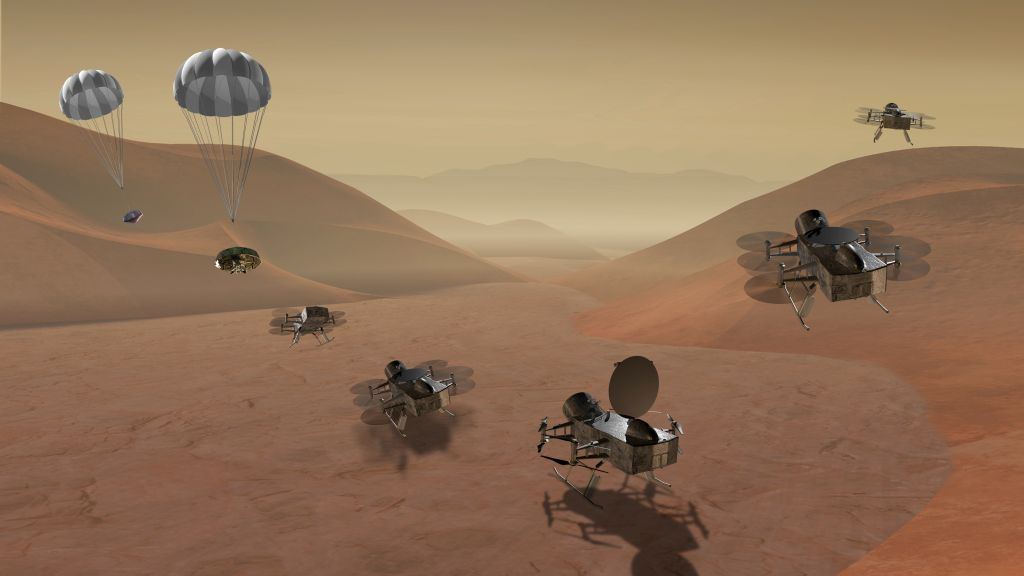
If there are dust devils on Titan, it’ll likely find them.
More:
- Press Release: Dust devils may roam hydrocarbon dunes on Saturn’s moon Titan
- Research Paper: Dust Devils on Titan
- Universe Today: Scientists Construct a Global Map of Titan’s Geology

